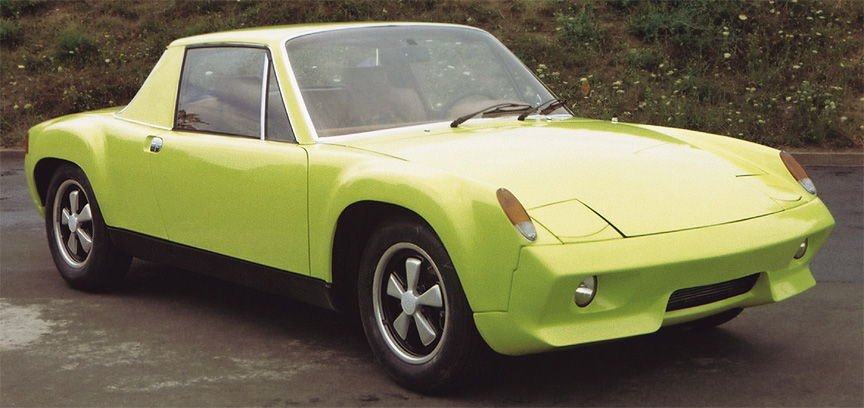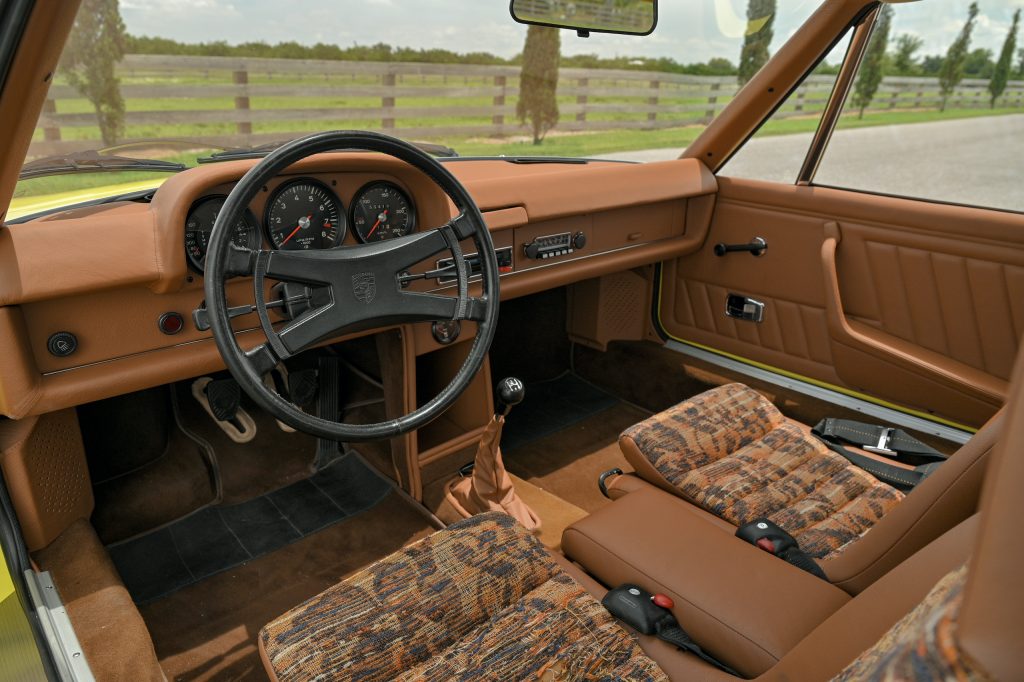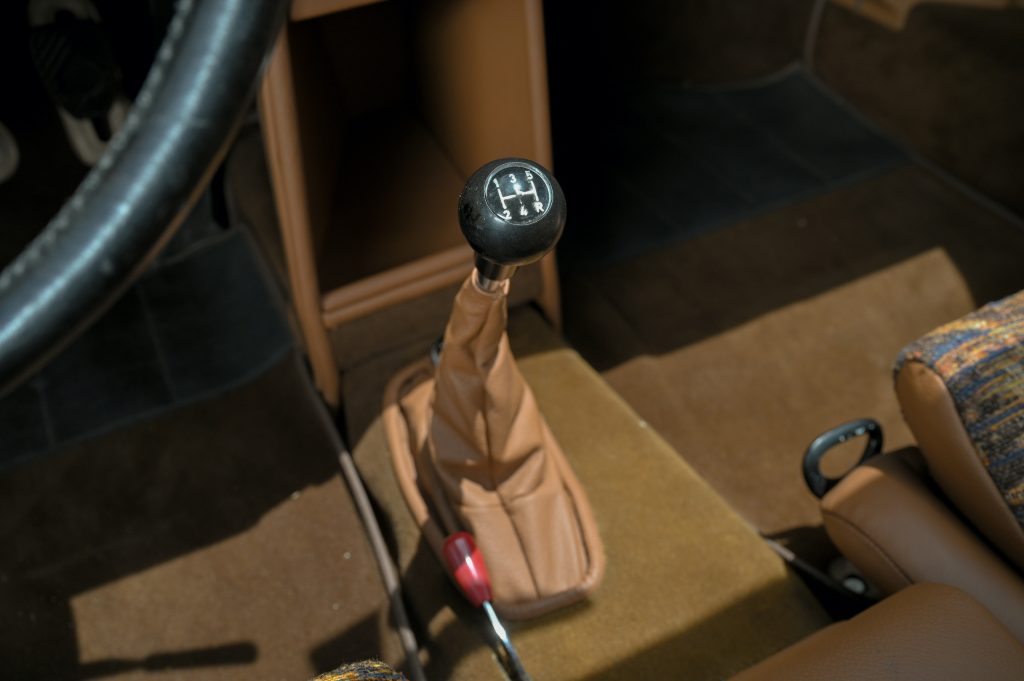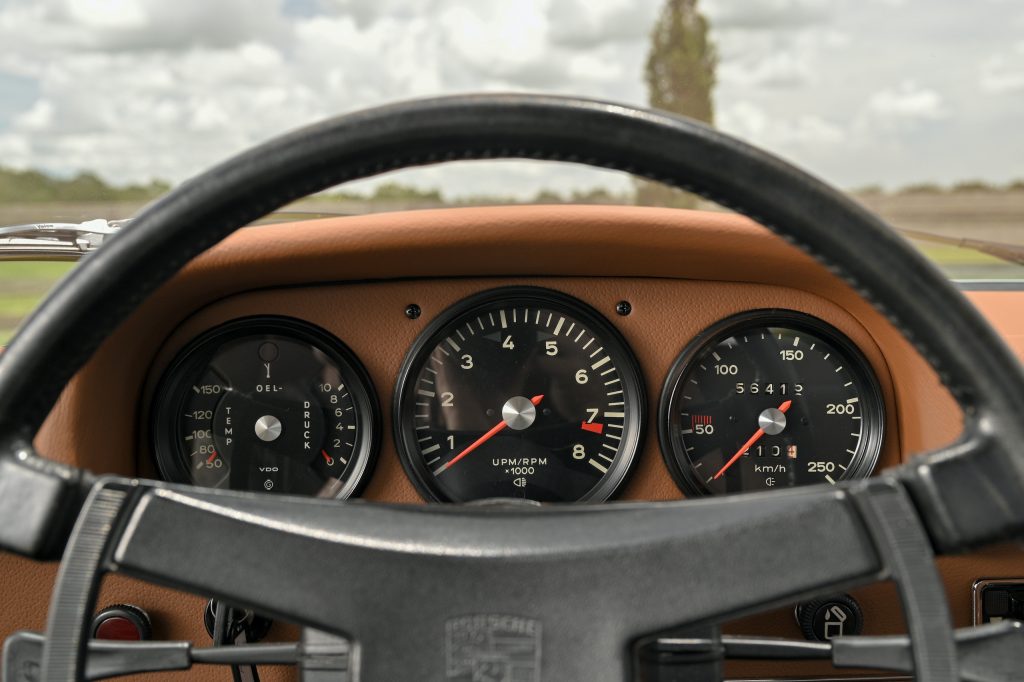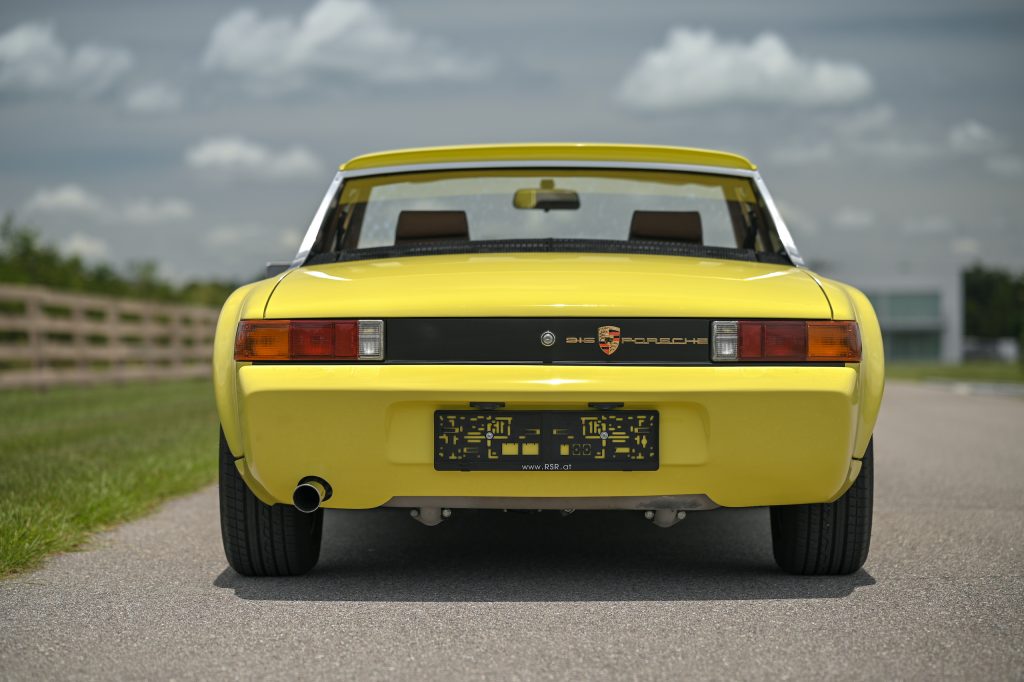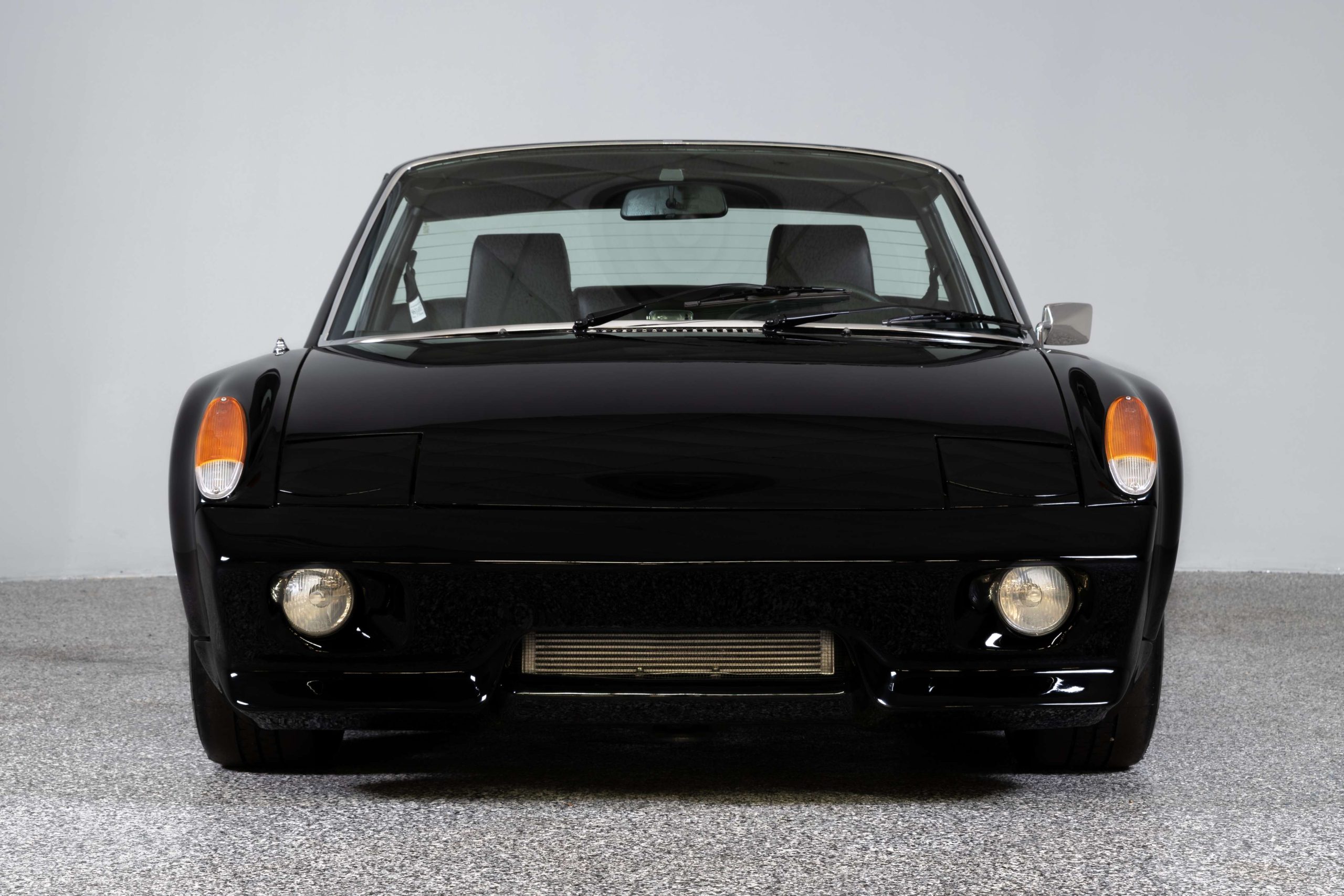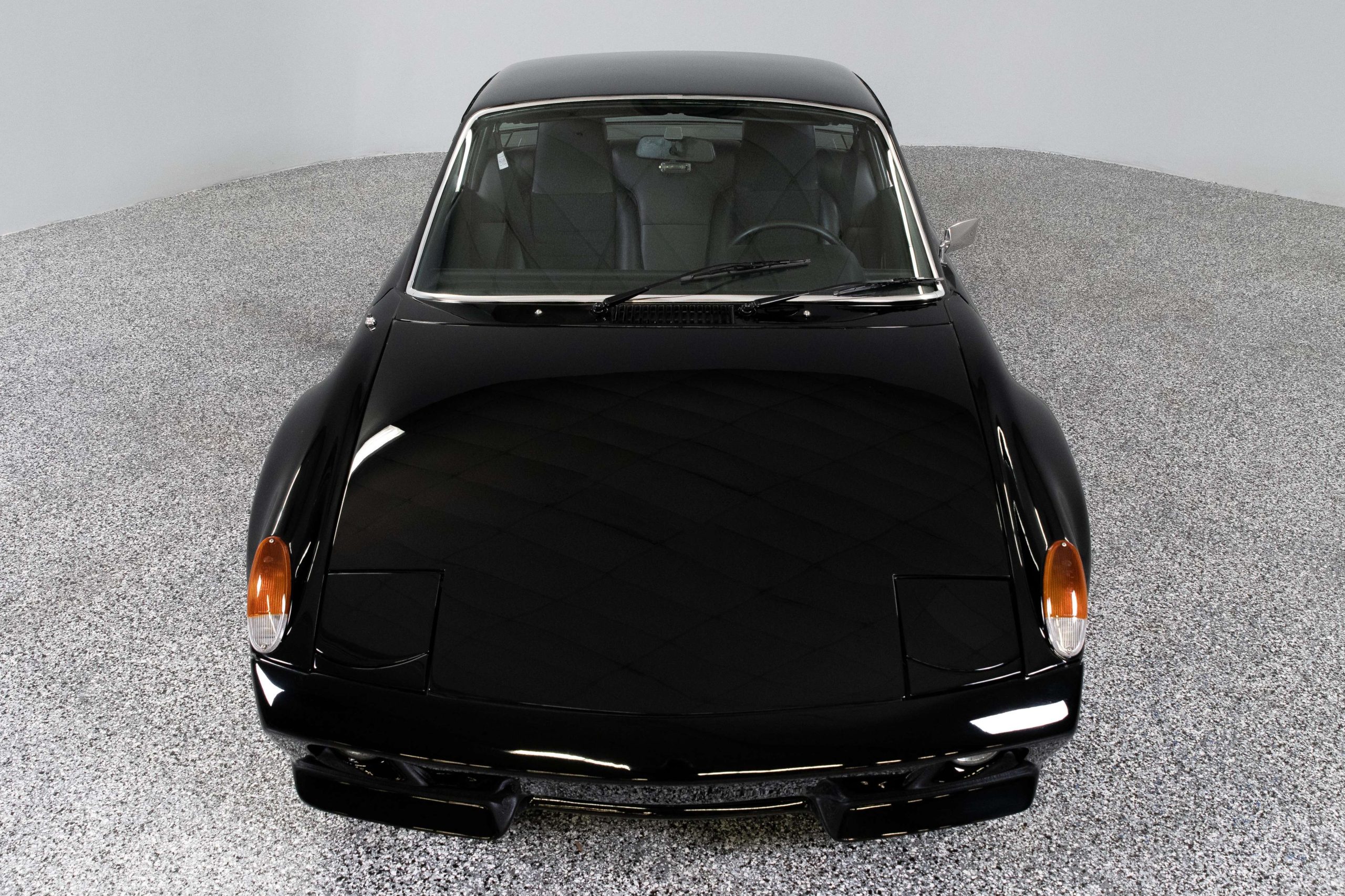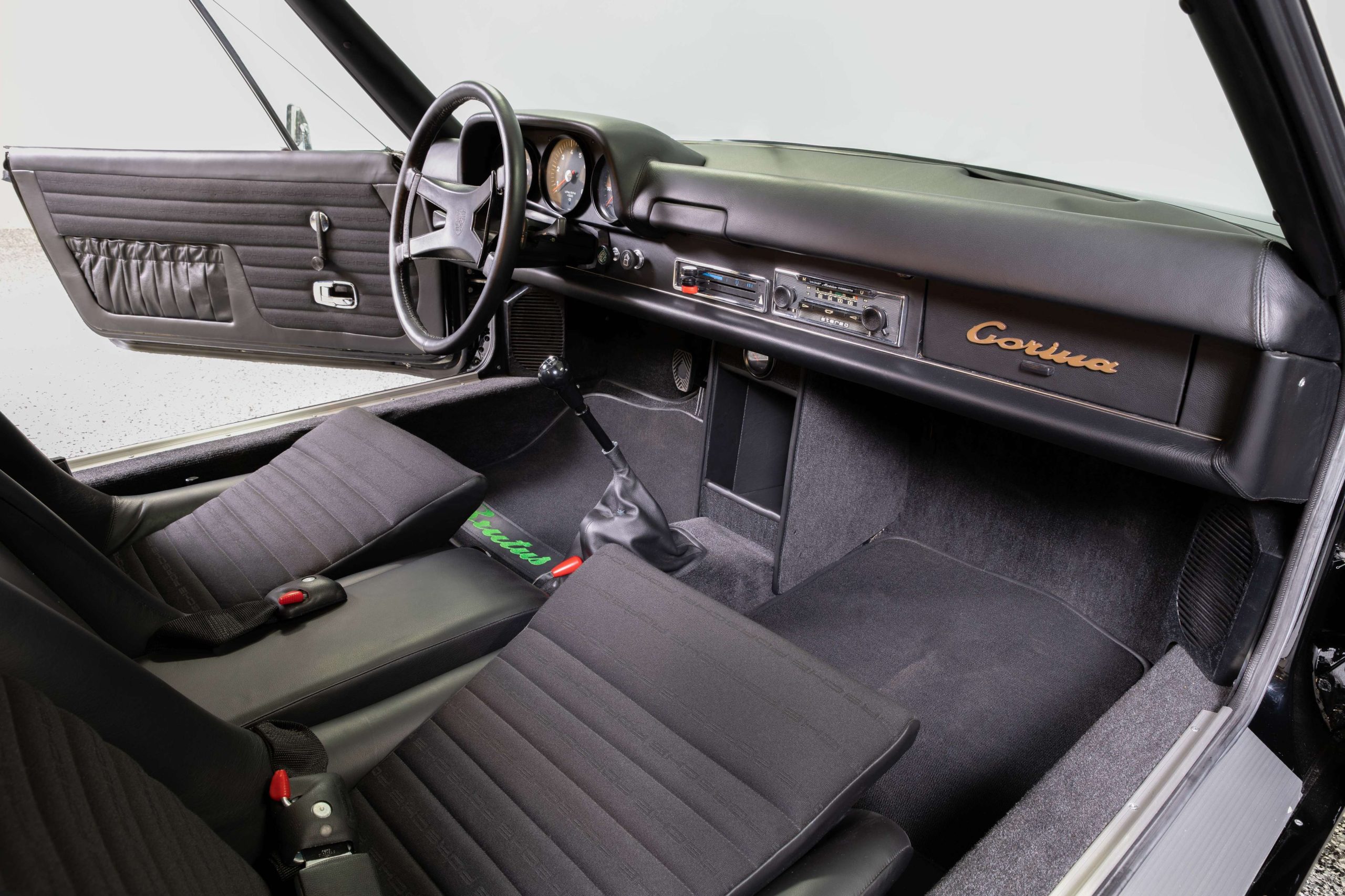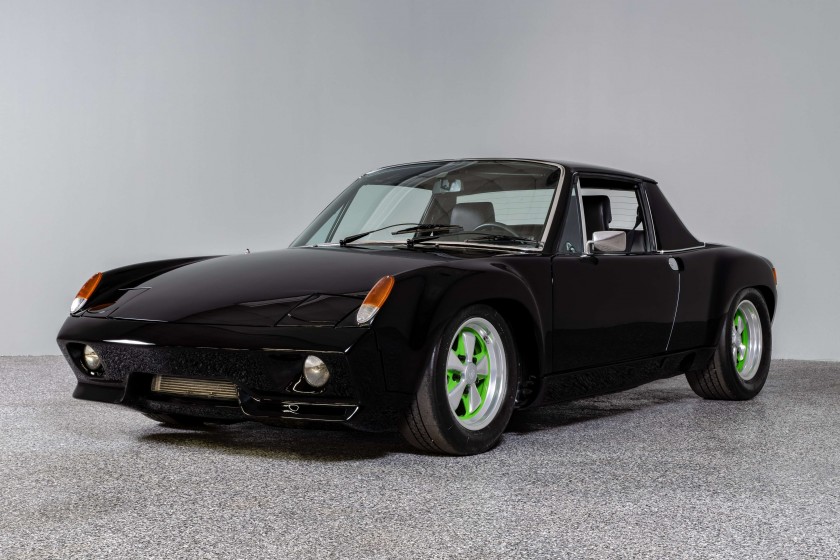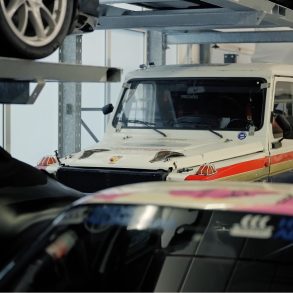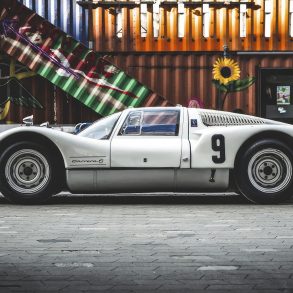Porsche 916 Prototype (1971 – 1972)
After a highly modified 914 finished sixth overall at Le Mans in 1970, Ferdinand Piëch saw potential for a higher-performance, luxurious version that could be registered for highway use, and pursued the idea of what would become the Porsche 916. At the time, Porsche was also looking for a way to increase overall 914 sales and better compete with cars like the Ferrari 246 Dino.
Chassis 9141430195, a 914/6, was pulled from the production line and modified specifically for this project. This first car would serve dual duty as Ferdinand Piëch’s daily driver and as a rolling testbed for the 916. This first 916 was basically a 914/6 M471 (widebody) with welded steel roof (so, a coupé), with bigger engine and luxurious interior. The welded steel roof was previously used on the 1969 914/8 of Ferry Porsche.
While other 914 models used a removable Targa roof panel, the 916 prototype used a steel roof, welded in place to add rigidity and to give the 914 the better handling at speed. Fender flares from the 914/6 GT were added to accommodate 7-inch Fuchs wheels and 180/70 VR15 tires. The front bumper cover got a new integrated air dam. Underneath, the car received the four-wheel vented disc brakes from the 911S, front and rear anti-roll bars, stiffer springs, and Bilstein shock absorbers as well as a reinforced floor.
In place of the 2.0-liter engine, Porsche first installed a 2.6-liter flat-six but later replaced it with an altered version of its 2.8-liter 911 RSR racing engine. Out of the box, this engine was good for 308 hp and 217 ft lbs of torque but Porsche fettled it even further to get the performance they wanted, ultimately getting the engine to 345 horsepower. This first car even got a nickname of “Brutus” thanks to Piëch’s wife, Corina.
Brutus was impressive and the go ahead was given to build ten more prototypes. These prototypes were less exciting than Brutus because these other cars had to live with the 2.4-liter flat-six from the 911S (rated at 190 hp) or the 2.7-liter flat-six from the 911 Carrera (rated at 210 hp). Even with the smaller engine, the 916 was capable of running 0-60 mph in under 7 seconds, on the way to a top speed of 145 mph, while the 2.7-liter cars were said to be capable of reaching 150 mph.
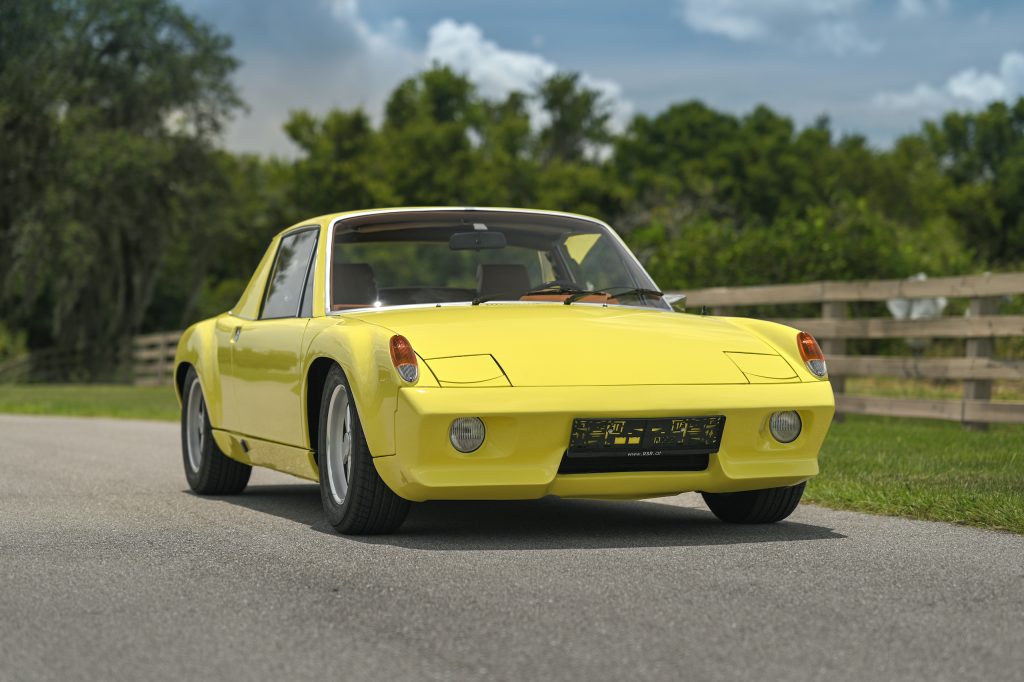
Like Brutus, the rest of the 916 prototypes took over the raw body from the 914/6. The roof was permanently welded to the body to make it more rigid coupe structure. The fenders were widened to make enough room for the larger 7-inch wide light alloy wheels. The car came with aerodynamic front and rear bumpers, reminiscent of the 914-6 GT cars. The 916 is also fitted with the brakes and 2.4 litre motor from the 911 S (or the 2.7 L from the Carrera). The 2341cc, fuel injected engine delivered a total of 190 hp at 6500 rpm and utilized the Type 915 transaxle. Like we mentioned, the 916 was fast, so fast in fact that it was the fastest accelerating road sport car Porsche built at that time.
The 916 was scheduled to debut at the 1971 Paris Auto Salon in October (as a 1927 model year car), but, two weeks before the show, Porsche killed the 916 project and halted production of the car. Porsche envisioned a selling price in the U.S. of $14,000. At a time when the most expensive 911 was the 911S Targa and that was priced at $10,000 and the more exotic Ferrari Dino 246 GT that the 916 was meant to compete with was $14,500. Porsche would never sell the 916 in enough numbers to make financial sense, so it halted the project. In the end, the Porsche 916 program was cancelled after those eleven prototypes were built.
Chassis numbers
Only eleven 916 cars were made, the first prototype was based on the 1971 model year 914/6 and the rest were 1972 models. The chassis numbers of those prototypes are listed below.
- Model year 1971: 9141430195 (prototype with 914/6 chassis number)
- Model year 1972: 9142330011 – 9142330020 (original 916 chassis numbers, not of 914/6)
Specs & Performance
| submitted by | Richard Owen |
| price $ | Prototype |
| engine | Flat 6 |
| valvetrain | SOHC |
| displacement | 2341 cc / 142.9 in³ |
| bore | 84.0 mm / 3.31 in |
| stroke | 70.4 mm / 2.77 in |
| compression | 8.5:1 |
| power | 141.7 kw / 190.0 bhp @ 6500 rpm |
| specific output | 81.16 bhp per litre |
| bhp/weight | bhp per tonne |
| torque | 215.6 nm / 159.0 ft lbs @ 5200 rpm |
| body / frame | Unit Steel |
| front tires | 185/70-15 |
| rear tires | 185/70-15 |
| front brakes | Vented Discs w/ Vacuum Assist |
| f brake size | x 282 mm / x 11.1 in |
| r brake size | x 290 mm / x 11.4 in |
| front wheels | F 38.1 x 17.8 cm / 15.0 x 7.0 in |
| rear wheels | R 38.1 x 17.8 cm / 15.0 x 7.0 in |
| steering | Rack & Pinion |
| curb weight | 907 kg / 2000 lbs |
| wheelbase | 2449 mm / 96.4 in |
| front track | 1387 mm / 54.6 in |
| rear track | 1481 mm / 58.3 in |
| length | 3985 mm / 156.9 in |
| width | 1735 mm / 68.3 in |
| height | 1219 mm / 48.0 in |
| transmission | 5-Speed Manual |
| gear ratios | 3.18:1, 1.83:1, 1.26:1, 0.962:1, 0.759:1, :1 |
| final drive | 4.43:1 |
Pictures & Details
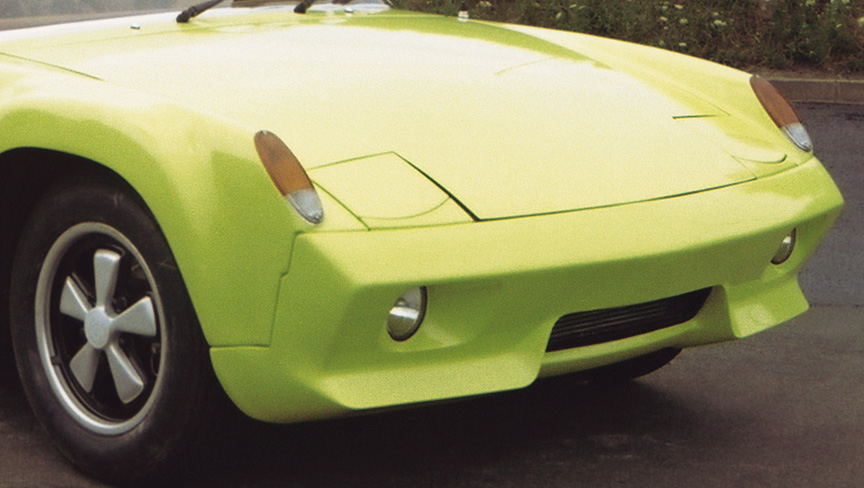
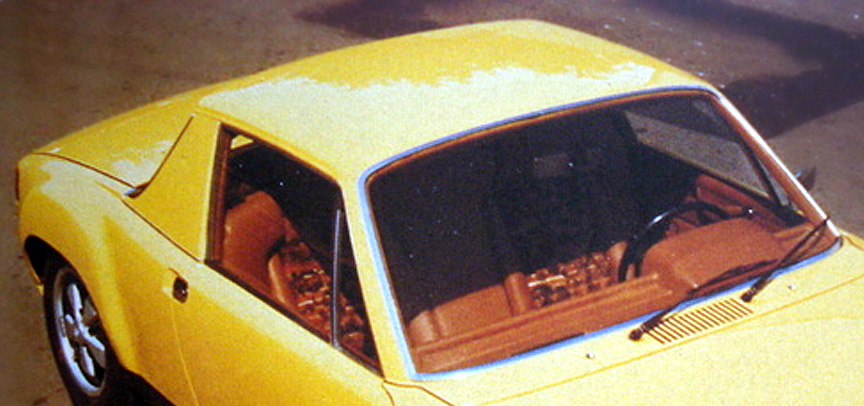
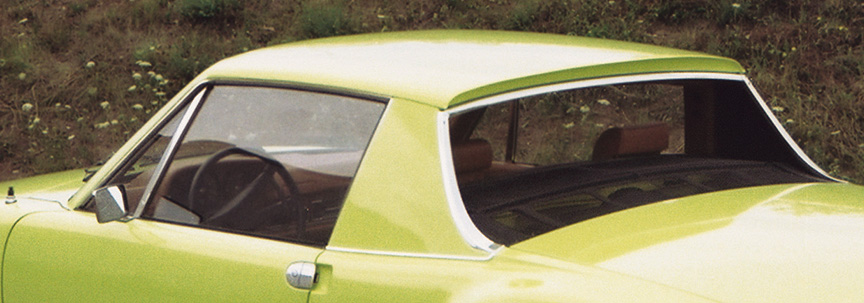
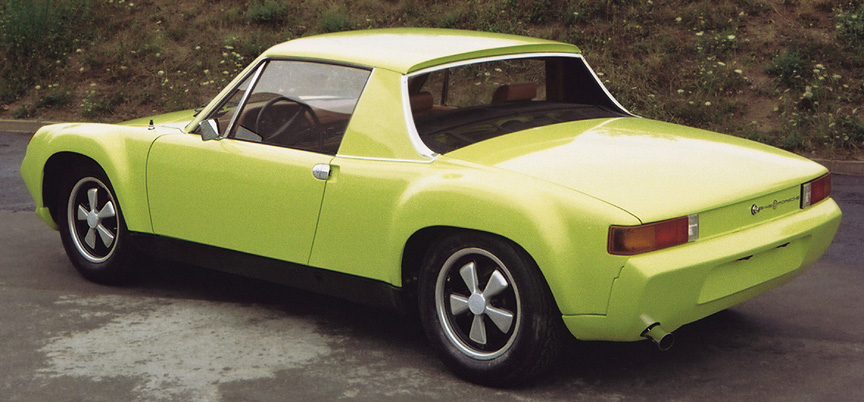
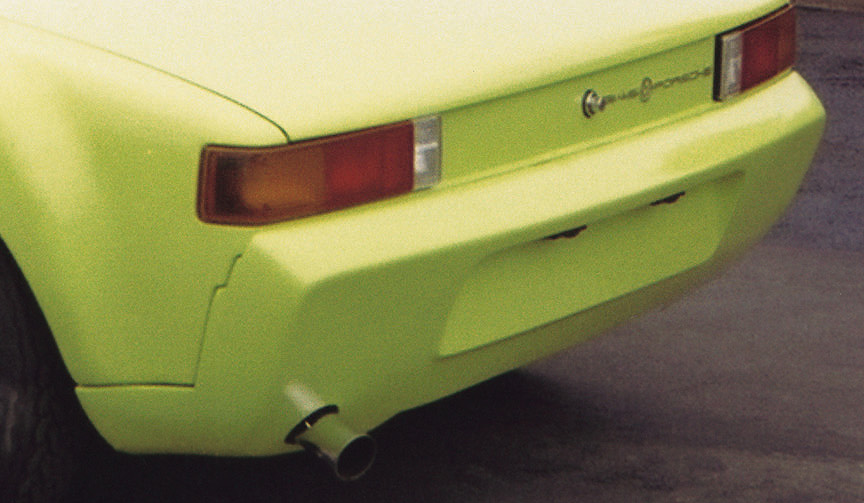
1972 Porsche 916 Auction (@Sotheby)
In a rare instance the 914-derived 1972 Porsche 916 was sold at RM Sotheby’s Monterey online auction. This was an opportunity to own a piece of Porsche history and buyers clearly agreed, with the car being sold for $957,000. Below are some of the photos and here is the information from Sotheby’s site.
1971 Porsche 916 Prototype “Brutus” Auction (@Artcurial.com)
This is the first Porsche 916 and it recently sold for a whopping 928,000€ on Artcurial. “Brutus”: the reason for this provocative name is under the rear hood of this very special Porsche: it houses an experimental 2.9-liter RSR flat-six engine designed at the factory in a central position, whose power would greatly exceed 300 hp. This nickname was given to it by Corina Piëch, daughter of Ferdinand Piëch, Ferry Porsche’s nephew then very involved in the development of touring and competition Porsches (including the development of the 917). Before being in Corina’s hands, this car was a prototype intended to give the 914 the power it needed to compete with other mid-engined sports cars such as the Dino 246 GT. At the risk of also disturbing the career of the 911 which, at that time, was threatened. Learn more…



